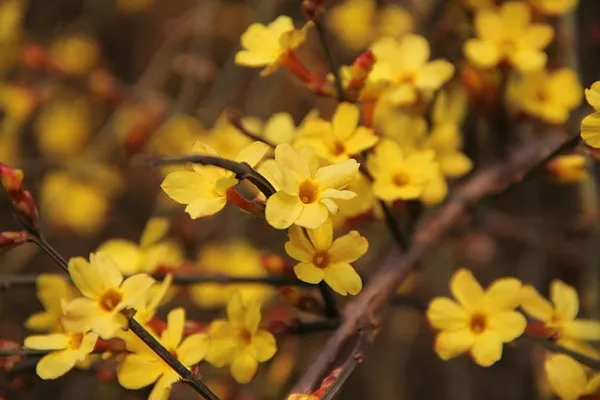The mesmerizing dance of hummingbirds in our gardens is a testament to nature’s intricate web of symbiotic relationships. These agile avians, with their iridescent plumage and rapid wing beats, share a profound connection with certain flowers that provide them with the life-sustaining nectar they seek. In this article, we delve into the world of flora to uncover the flowers that hummingbirds adore the most, exploring the factors that make these blooms irresistible to these remarkable birds.
Understanding Hummingbirds’ Nectar Preferences:
Hummingbirds are nectarivores, relying primarily on the energy-rich nectar obtained from flowers to fuel their high metabolism. While they can see a broad spectrum of colors, they are particularly attracted to red and orange hues. Their long bills and specialized tongues are adapted to extracting nectar from tubular flowers, making these blooms especially appealing.
Trumpet-Shaped Delights:
Hummingbirds have a penchant for trumpet-shaped flowers, as they are perfectly designed to accommodate their long bills and tongues. One iconic example is the Trumpet Vine (Campsis radicans). With its vibrant orange or red tubular blossoms, the Trumpet Vine provides a generous supply of nectar, attracting hummingbirds from afar. Another favorite is the Coral Honeysuckle (Lonicera sempervirens), which boasts clusters of tubular, coral-colored flowers, inviting hummingbirds with its sweet nectar and alluring fragrance.
Jewel-Toned Beauties:
Hummingbirds are drawn to flowers with jewel-like colors, particularly shades of red, pink, and purple. The Bee Balm (Monarda) is a striking example, featuring vibrant clusters of tubular flowers that hummingbirds find irresistible. Salvia, with its diverse species and colors ranging from red to purple, is another favorite. The Black and Blue Salvia (Salvia guaranitica), with its deep indigo blooms, is a standout choice for attracting hummingbirds.
Fuchsia Fascination:
The pendulous, tubular flowers of Fuchsia plants make them highly attractive to hummingbirds. Fuchsia hybrids, with their elegant, drooping blossoms that often combine shades of red, pink, and purple, provide a visual feast for both gardeners and hummingbirds alike. The Fuchsia plant not only adds a touch of elegance to the garden but also serves as a reliable source of nectar for these tiny avian visitors.
Long-Blooming Perennials:
Hummingbirds appreciate a consistent supply of nectar throughout the growing season. Long-blooming perennials are thus favored for their sustained availability of nectar-rich flowers. The Peruvian Lily (Alstroemeria) is one such perennial, producing clusters of tubular flowers in various colors. Coneflowers (Echinacea) are also a reliable choice, offering extended blooms that span the summer months and beyond.
Native Plants:
Hummingbirds have coevolved with certain plant species, and native plants often share a special connection with these avian wonders. Planting native flowers can help support local ecosystems and attract hummingbirds that have adapted to the specific characteristics of these blooms. Cardinal Flower (Lobelia cardinalis), with its brilliant red spikes, is a North American native that hummingbirds find particularly appealing. Additionally, the Scarlet Sage (Salvia coccinea), native to the southeastern United States, boasts vibrant red flowers that hummers can’t resist.
Creating a Hummingbird-Friendly Garden:
To maximize the presence of hummingbirds in your garden, consider the following tips:
Plant Diversity: Incorporate a variety of flowers that bloom at different times, ensuring a continuous supply of nectar throughout the season.
Provide Shelter: Hummingbirds need safe spaces to rest and perch. Trees, shrubs, and strategically placed birdhouses can offer shelter and protection.
Avoid Pesticides: Hummingbirds are highly sensitive to pesticides. Opt for natural pest control methods to protect both the birds and the plants.
Use Hummingbird Feeders: Supplementing natural nectar sources with hummingbird feeders can provide an additional food source, especially during periods of low flower abundance.
Conclusion:
In the intricate tapestry of nature, the relationship between hummingbirds and flowers is a harmonious symphony of color, form, and adaptation. By selecting the right blooms for your garden, you can invite these enchanting creatures to grace your outdoor space with their vibrant energy. As stewards of our environment, cultivating a garden that caters to the needs of hummingbirds not only enhances the aesthetic appeal but also contributes to the preservation of these remarkable pollinators. So, let your garden become a haven for hummingbirds, where the delicate balance between flora and fauna thrives in perfect unity.


